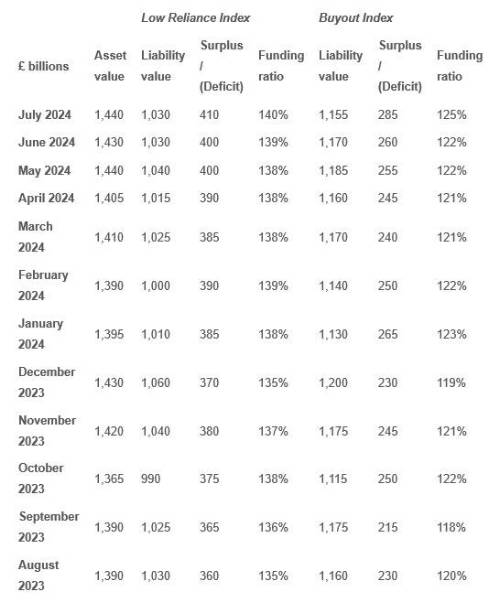Meanwhile, PwC’s Low Reliance Index also shows a record surplus of £410bn. This tracks the position of the UK’s DB schemes based on a low-risk income-generating investment strategy, which should mean the pension scheme would be unlikely to call on the sponsor for further funding.
With this sustained surplus position for pension schemes, the potential to unlock pension scheme assets to drive investment in the UK economy continues to be explored. This is one of the key aims of the initial phase of the pensions review announced by the government earlier this month, with a focus on the Local Government Pension Scheme (LGPS).
John Dunn, head of pensions funding and transformation at PwC UK, said: “The position of the UK's 5,000 DB schemes has never looked stronger and we are pleased to see the new government has put pension schemes at the heart of its mission to 'boost growth and make every part of Britain better off'.
“Defined benefit pension schemes can play a part in this growth, particularly if the initiatives around surplus sharing as an incentive for schemes to run-on are pushed forward. There is appetite from a number of schemes to seriously consider this model and, as we've explored previously, it could unlock £340bn for sponsors and members.
Why then, has the government chosen to focus part of the first phase of its pensions review on the pensions of town hall employees?”
Steve Blackmore, head of public sector pensions at PwC UK, added: “With assets of around £360bn, the LGPS has been described as among the largest pension schemes in the world. Allocating more of its substantial assets to UK infrastructure projects would certainly provide significant funding for critical projects. .
“That said, we think the real opportunity emerges over the next decade and beyond. LGPS pensions continue to grow, as current and future town hall workers build them up, and if income and outgoings broadly balance this will mean the LGPS will double its asset base every ten years - potentially becoming an even more potent UK growth accelerator.”
The PwC Low Reliance Index and PwC Buyout Index figures are as follows:

|

